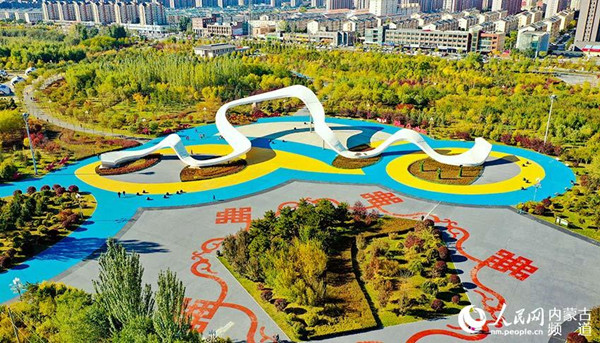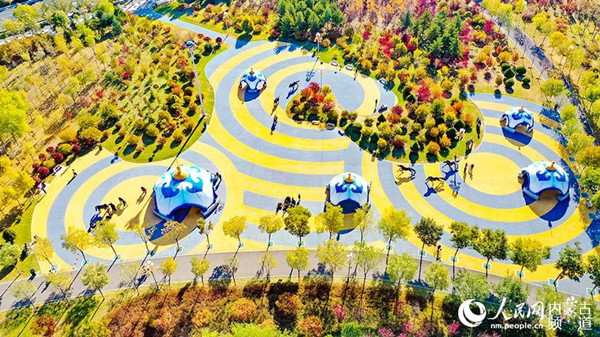N China's Hohhot gets autumn color
Hohhot, capital city of North China's Inner Mongolia autonomous region, is taking on an autumn look as the temperature continues to drop. With autumn approaching, the city's tree leaves have started to turn yellow, giving the place a lighter look.
Here are two landmarks in the city worth visiting during autumn.
Silk Road Cultural Park

A piece of landmark architecture in Hohhot's Silk Road Cultural Park, in the shape of a ribbon of silk. [Photo/people.com.cn]
Located at the intersection of East Ulaanqab Street and East Second Ring Road, the park covers an area of 146 hectares.
The park highlights the Silk Road and Mongolian culture from the Yuan Dynasty (1271-1368).
According to experts, during the Ming (1368-1644) and Qing (1644-1911) dynasties, Hohhot became a political, economic, and cultural center of the north, a key hub on the Grassland Silk Road, and a stop on the main transportation route to Mobei (the area north of the vast deserts on the Mongolian Plateau).

An aerial view of the Silk Road Cultural Park in Hohhot. [Photo/people.com.cn]
With the expansion and development of merchants in Inner Mongolia, it has become an important commodity distribution center in the northern grassland area and an important link for trade between the area and central China.
Hohhot is the core area where nomadic culture and farming culture meet. It is one of the eastern starting points and an important link on the Grassland Silk Road.





